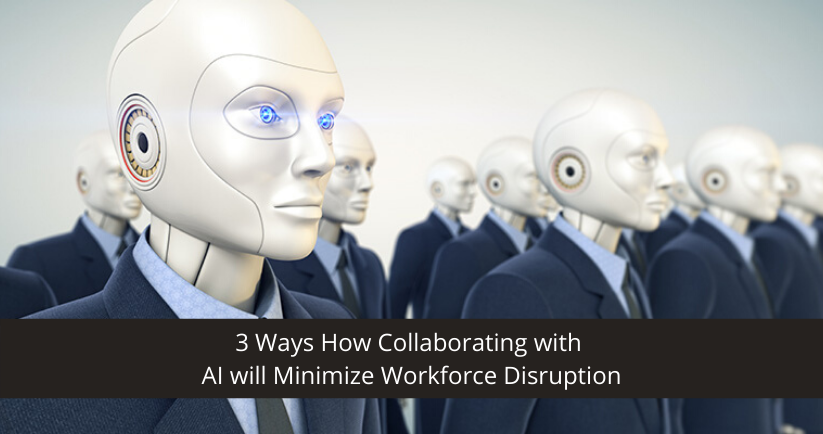We are on the brink of the Industrial Revolution 4.0 and there is a wave of despair across the globe. People are scared that automation may lead to workforce disruption on a big scale. They think they might lose their jobs to highly advanced robots. But industry leaders suggest otherwise. Elon Musk recently said that Tesla’s biggest mistake was to be over-reliant on automation. Researchers have found out that companies that focus on human and AI collaboration outsmart those that focus only on automation by three times. This is why companies need to reimagine the workspace as a place where AI and humans collaborate. Hence. they must focus their attention on preparing their people for the impact that AI is going to make soon.
This article puts forth 3 ways how collaborating with AI will minimize workforce disruption.
1. Focus on their relative strengths
It’s not about displacing the weak for the better rather focusing on their relative strengths. Humans are much more capable when it comes to subjective qualities – leadership, creativity, judgment, and teamwork – while AI brings super fast speed and scalability. Imagine a situation where you, an automobile manufacturer, are planning to sell your products in a completely new sector, say defense forces. In such a situation you might lack relevant data, a prerequisite for AI for making forecasts, and analyzing market demand. Thus, in such scenarios machines will be rendered useless and humans will play a pivotal role.
2. Empower your people to learn the technology
Researchers suggest that it’s not AI that will be the cause of workforce disruption, rather workers who will use AI will displace those who don’t. Companies should train their employees and reduce barriers by implementing drag-and-drop and point-and-click type AI features that make it easy for employees to adopt this technology. This will exponentially increase the capability of your workforce. For example, marketers will be able to use techniques such as regression and cluster analysis for exploring new customer segments that fall right into your niche.
3. Upskill your workforce
With the advent of AI, employees must operate differently. They need to shun their old patterns of thinking and adopt new ways of doing jobs. This requires a massive upskilling program. But industry statistics haven’t been very welcoming. The research found that although 67% of companies acknowledge that their employees don’t have the required skills, only 26% of senior executives believe that their workforce is ready to learn about AI. Budgetary constraints and lack of appropriate training technology were quoted as reasons for holding back upskill programs. Also, most companies that have started imparting training sessions have limited it to the analytics department only.
This shows that companies lack an enterprise-wide plan to conduct training and upskill their workforce.
AI is bound to cause workforce disruption. It will make operations lightning-fast, provide accurate data, and furnish rich insights. But this can only happen when companies build suitable training programs for their workforce on subjects like automation, machine learning, and AI. Curbing workforce disruption is not only an economic incentive but a moral obligation as well.
At Sage, we are home to world-class CRM software, ERP software and HRMS software that will make remote working a piece of cake, boost employee productivity, synchronize inter-departmental activities, and generate more profits.
Disclaimer: All the information, views and opinions expressed in this blog are those of the authors and their respective web sources and in no way reflect the principles, views or objectives of Sage Software Solutions (P) Ltd.




